Financial Statement Analysis: Definition, Types, How to do, Example
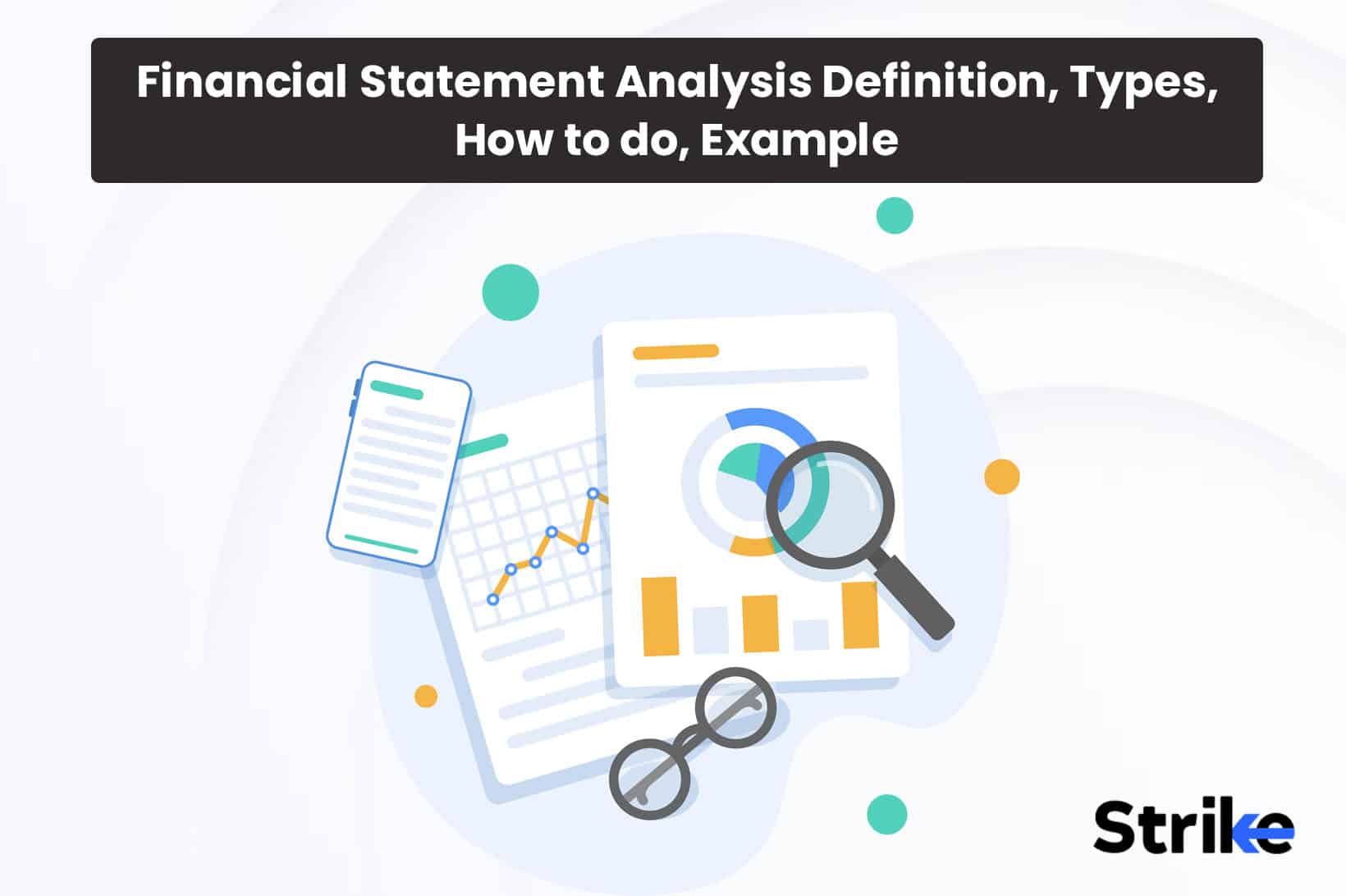
Financial statements provide vital insights into a company’s financial position and performance. Financial statement analysis is the process of reviewing and evaluating these statements – including the balance sheet, income statement, cash flow statement, and accompanying disclosures – in order to gauge a company’s past performance, current financial health, and future prospects.
Studying financial statement accounts and calculating key ratios across reporting periods help analysts identify positive and negative trends impacting profitability, efficiency, liquidity, leverage, and cash flows. Horizontal, vertical, and ratio analysis techniques help pinpoint where and how key financial metrics are changing over time. Thoughtful financial statement analysis allows stakeholders to understand the drivers behind the numbers, facilitating prudent lending, valuation, forecasting, and investment decisions.
This article explores the meaning of financial statement analysis, its key methods and techniques, the types of financial statements reviewed, where they can be accessed, and how financial analysis provides vital insights for investors, creditors, and management. A case study example further demonstrates how financial statement analysis is applied to evaluate company performance in the real world. With diligent financial analysis, stakeholders can thoroughly evaluate an enterprise’s financial stability, health, risks, and opportunities to make astute strategic choices.
What is financial statement analysis?
Financial statement analysis is the process of examining a company’s financial statements in order to make business decisions. Financial statement analysis involves comparing financial data across reporting periods and evaluating trends in accounts, ratios, and indicators over time. The goal is to assess the financial health and operations of a business to determine how effectively it is being managed and how likely the company is to meet its short-term and long-term financial objectives.
There are several key steps involved in financial statement analysis. The first is to obtain copies of the company’s financial reports, which typically include the income statement, balance sheet, statement of cash flows, and statement of changes in equity. These core statements provide valuable quantitative insights into the company’s performance over a set period of time.
Next, horizontal, vertical, and ratio analyses are conducted to identify changes and trends. Horizontal analysis compares financial data across a row of financial statements over a series of reporting periods. The metrics are compared horizontally to see increases and decreases in accounts over time. Vertical analysis converts each line item on a financial statement into a percentage of another key metric, such as total assets or total revenues. These percentages are compared vertically, period over period, to identify major structure or relationship changes.
Ratio analysis involves creating ratios using accounts and figures from financial statements. Common ratios include liquidity ratios, solvency ratios, efficiency ratios, and profitability ratios. These ratios reveal insights like the company’s ability to pay short-term debts, long-term financial leverage, how effectively assets are being used, and the profit earned from sales and investments. Comparing ratios year-over-year highlights positive and negative trends.
After compiling comparative data and key ratios, the results are further analyzed to assess performance. This involves identifying reasons behind major account changes, researching external factors influencing the company, pinpointing strengths or weaknesses impacting financials, and determining how operating decisions have impacted the numbers. Any concerning changes or trends will need to be studied closely to determine the root causes and possible required actions.
The findings of the financial statement analysis should be summarized in a report detailing key takeaways, comparative data, ratio results, and identified variances. The insights derived from the assessment will help management make operational adjustments to improve the company’s financial position in the periods ahead. The results will also assist stakeholders in evaluating the overall profitability and viability of the company as an investment or lending opportunity.
What is the history behind financial analysis?
The practice of analyzing financial statements evolved in the late 1800s as the management of companies transitioned from entrepreneurs to professional managers. Additionally, the growing financial sector needed financial reports to inform lending and investment decisions. These changes drove the development of formal financial statement analysis.
In earlier eras, rudimentary accounting records were kept to track trades, assets, and transactions. Ancient civilizations like Mesopotamia and Babylon utilized basic bookkeeping to enumerate goods received and traded. In India, writings on record keeping date back to the 2nd century BC. The narrative style of early bookkeeping detailed transactions in single columns without separation of debits and credits.
Double-entry bookkeeping emerged in 1494 when Luca Pacioli published a text describing the system of using journals and ledgers with separate debit and credit categories. This enhanced efficiency and provided a clearer financial picture. However, financial records were still inner-company tools.
Bookkeeping migrated to America with colonization. Small business owners worked directly with bookkeepers who recorded transactions. Complex analysis was unnecessary as owners were personally involved.
The rise of railroads in the 1800s transformed bookkeeping into the formal practice of accounting. Railroads required extensive metrics, financial statements, and operating ratios to evaluate performance. Business transactions accelerated as rails shrank distances. Standard time zones were established.
Railroads encouraged investment in the stock of unfamiliar corporations. Investing had previously relied on personal knowledge. Now, investors need financial statements to evaluate opportunities. This demand increased following the 1929 market crash and the establishment of the SEC.
The SEC began requiring public companies to file financial reports, including balance sheets, income statements, and cash flow statements. Corporations needed to attract capital, but shareholders distrusted management. Independent accounting reviews became essential to maintain confidence.
Meanwhile, the 1913 income tax and 1917 Uniform Accounting Bulletin forced improved business record keeping. Individuals and companies struggled to meet new standards.
Fundamental and technical analysis techniques emerged to interpret financial statements. Fundamental analysis uses ratios like earnings per share. Technical analysis examines quantitative charts like moving averages. These tools enabled modern insights from financial reports.
What are the methods of financial statement analysis?
There are four key methods of analyzing financial statements: horizontal analysis, vertical analysis, ratio analysis, and trend analysis. Each technique involves evaluating comparative financial data points across reporting periods to identify variances, trends, and relationships that shed light on a company’s performance. The findings derived from financial statement analysis methods guide stakeholders in making investment and management decisions regarding a company’s future prospects.
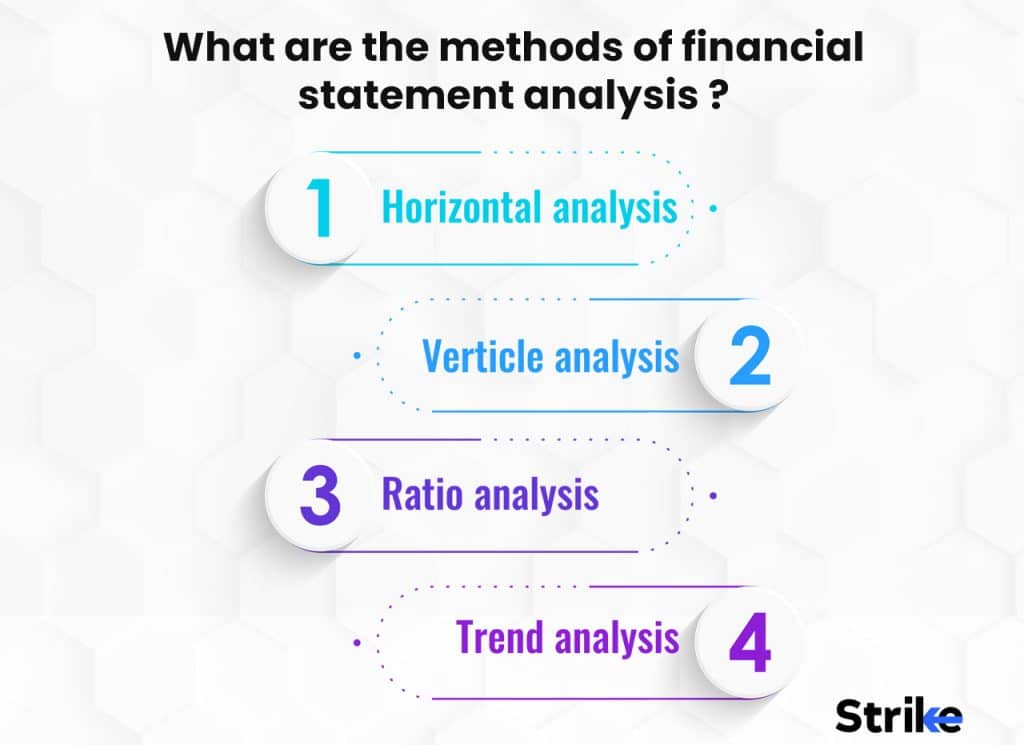
1.Horizontal analysis
Horizontal analysis is a financial statement analysis technique that compares line items across the financial statements over a period of time. Also known as trend analysis, it allows analysts to spot increases and decreases in accounts across reporting periods.
To conduct a horizontal analysis, financial analysts compile data from a company’s financial statements from at least two consecutive reporting periods. Then, they compare the line items horizontally, calculating the dollar and percentage changes between periods. For example, reviewing the income statements of the past three years would show how revenue, cost of goods sold, operating expenses, and other accounts have risen or fallen across that timeframe.
Horizontal analysis helps determine whether accounts have increased or decreased compared to a previous period. It also reveals the magnitude of those changes. Understanding what accounts are changing and how much it provides insights into the company’s evolving financial circumstances. Rapid increases in revenues or expenses signal aggressive expansion efforts or trouble on the horizon. Declining account balances reflect cost-cutting initiatives or problems like decreased production capacity.
While horizontal analysis shows variances in financial statement accounts, further research is needed to understand what’s driving material changes. Horizontal analysis is most effective when multiple accounting periods are included to reveal long-term trends. Comparing financial data quarter-over-quarter and year-over-year helps analysts spot positive or negative momentum.
2. Vertical analysis
Vertical analysis converts each line item on a financial statement to a percentage of a key financial factor for the purpose of comparison across reporting periods. On the income statement, vertical analysis uses total revenues as the base figure. On the balance sheet, total assets or total liabilities and equity are used as the base.
To conduct vertical analysis, each line item is divided by the base figure. For example, on the income statement, operating expenses would be divided by total revenues to express it as a percentage of revenues. These percentages are then compared across multiple time periods to identify changes in the income statement structure. A growing percentage for a particular account indicates it is becoming a larger component of revenues.
On the balance sheet, vertical analysis reveals changes in asset composition, capital structure, liquidity levels, and other key relationships. Each asset and liability account is converted to a percentage of total assets or liabilities and equity. Comparing these percentages over time shows shifts in capital structure and asset allocation to help analysts assess financial health.
A key benefit of vertical analysis is identifying major structural changes and trends in accounts that are obscured by nominal amounts on the financial statements. For example, a large company shows a very small decline in gross profit dollars that seems insignificant. However, vertical analysis could reveal gross profit dropped from 40% of revenue to 30% of revenue, which is a major change in profitability.
Vertical analysis converts all financial data to percentages, standardizing the scale to make period-to-period comparisons more meaningful. Analysts quickly spot changes in financial statement relationships and sections that merit further research.
3. Ratio analysis
Ratio analysis involves creating financial ratios using accounts and figures from the key financial statements. These ratios provide additional insights into company performance that are not evident from the financial statements alone. Common financial ratios fall into categories including liquidity, solvency, efficiency, and profitability.
Liquidity ratios assess a company’s ability to pay its short-term obligations. Key liquidity metrics include the current ratio and quick ratio. The current ratio measures current assets against current liabilities. Meanwhile, the quick ratio is more conservative, measuring only cash and other assets easily converted to cash against current liabilities. Both highlight short-term financial strength.
Solvency ratios evaluate a company’s ability to meet long-term financial obligations. The debt-to-equity ratio compares a company’s long-term debt to shareholder equity to assess financial leverage. Times interest earned helps assess the cushion a company has to cover its debt burden by comparing earnings to interest expenses.
Efficiency ratios signal how well a company is utilizing its assets and resources. Inventory turnover, days sales outstanding, and other activity ratios measure how efficiently assets like inventory and receivables are managed. Capital intensity ratios like fixed asset turnover gauge the productivity of long-term assets.
Finally, profitability ratios demonstrate a company’s bottom-line performance. Gross profit margin, operating margin, net profit margin, return on assets, and return on equity provide different perspectives on the company’s profit drivers and ability to generate returns from inputs.
Comparing financial ratios over time reveals positive or negative trends in liquidity, efficiency, profitability, and other areas. Analysts dig deeper into the factors causing major shifts in key ratios.
4. Trend analysis
Trend analysis examines changes in financial statement accounts and ratios over time to identify positive or negative trends. Analyzing multiple reporting periods highlights growing or declining momentum that impacts future performance.
Financial analysts compile comparative data across at least three reporting periods to conduct trend analysis. The data is plotted on a graph with time on the horizontal axis and the financial metric on the vertical axis. A trend line is added to show the general direction of the financial indicator. An upward-sloping trend signals increases over time, while a downward-sloping trend line indicates declines.
For example, plotting a company’s net profit margin over several years would highlight whether it has been trending up or down. It suggests the company has been steadily improving profitability if the trend line slopes upward. A downward-sloping trend line indicates declining profit margins, which could be a troubling sign.
Using a mix of these techniques provides a comprehensive view of a company’s financial performance. Horizontal and vertical analysis highlight areas of major change in financial statements. Ratio analysis measures financial health from diverse perspectives. Trend analysis indicates improving or worsening momentum. Together, these methods help analysts gain a robust understanding of the company’s current position and likely future direction to inform strategic decisions and investment choices.
While quantitative methods reveal variances and trends, analysts must supplement financial statement analysis with qualitative insights. Researching external factors impacting the company and management decisions driving the numbers allows analysts to tell a story behind the financial trends and derive meaningful conclusions. Financial statement analysis provides key building blocks, but thoughtful interpretation is critical.
What are the types of financial statements?
. The key types of financial statements and reports are balance sheets, income statements, cash flow statements, statements of retained earnings, statements of shareholders’ equity, annual reports, and notes to the financial statements.
1.Balance sheet
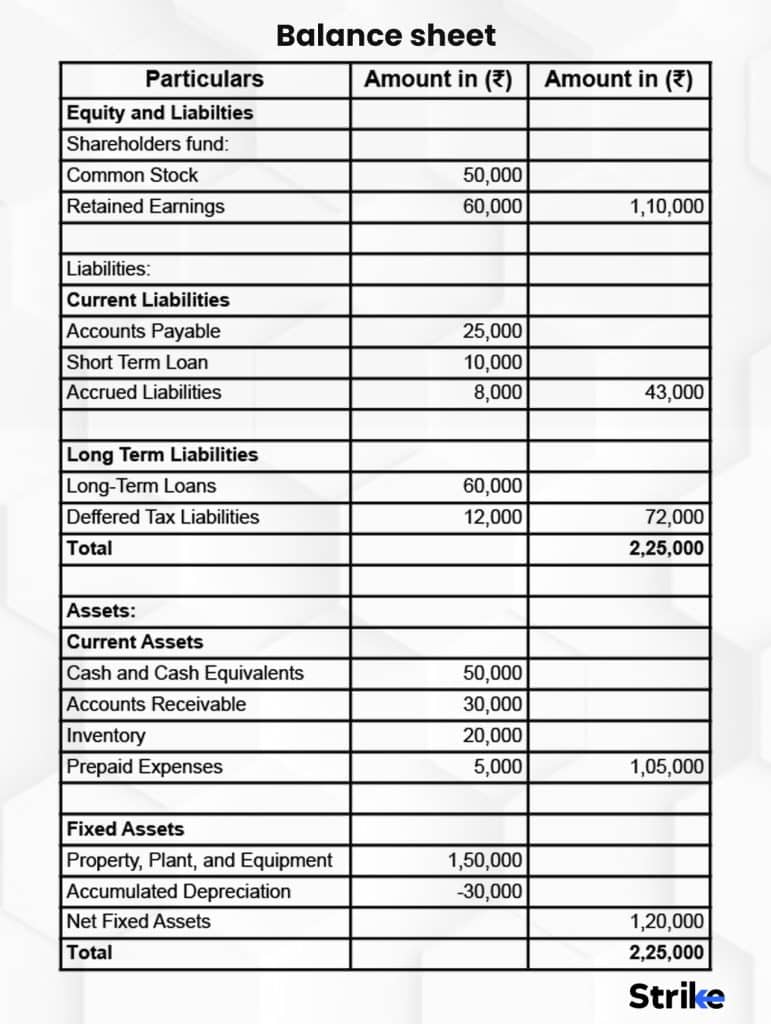
The balance sheet provides a snapshot of a company’s financial standing at a specific point in time. It details the company’s assets, liabilities, and shareholders’ equity as of a stated date. Assets reflect what the company owns, while liabilities reflect what the company owes. Shareholders’ equity represents assets minus liabilities. The balance sheet offers insights into the company’s liquidity, financial health, and capital structure. Comparing balance sheets over time highlights changes in asset allocation, liabilities, and ownership equity.
2. Income statement
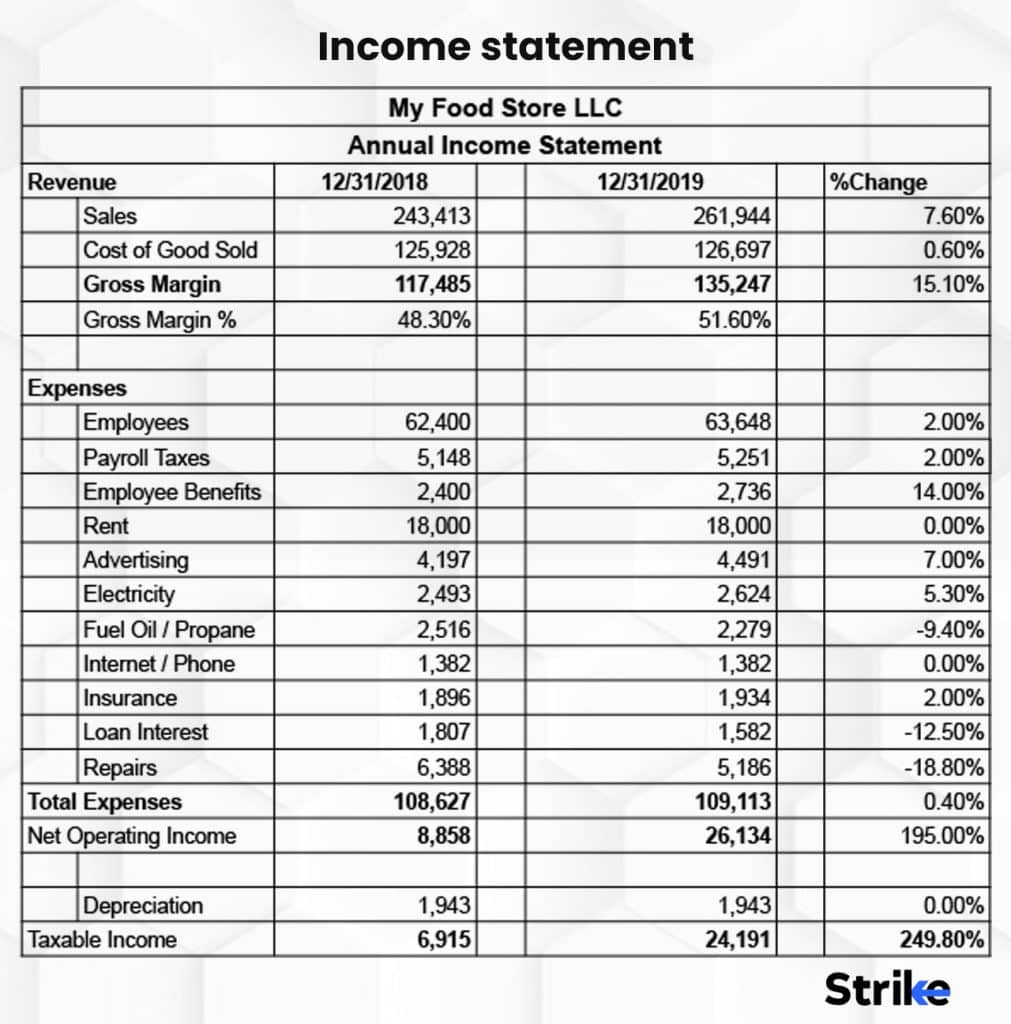
The income statement summarizes a company’s revenues, expenses, and profit or loss over a period of time. It shows the core operating activities that generated net income or loss for the reporting period. The income statement begins with revenues earned and then deducts the costs of operating the business, including costs of sales, operating expenses, interest, taxes, and other expenses, to arrive at net profit or loss. The income statement offers visibility into the profitability and earnings power of the company.
3. Cash Flow Statement
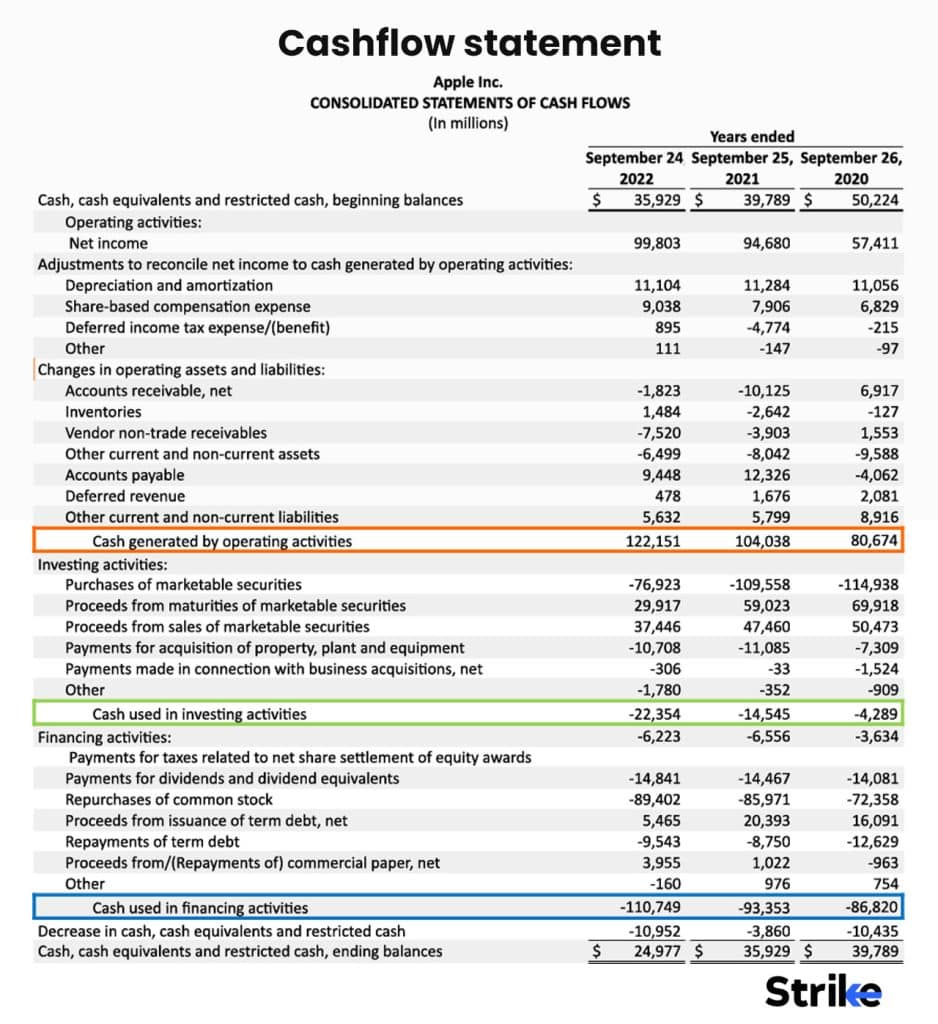
The cash flow statement reports how cash entered and exited the company from operations, investments, and financing during the reporting period. The operating activities section shows cash generated from the company’s core business operations. Investing activities highlight cash used for or provided by investments. Financing activities reflect cash related to debt, equity, and dividends. The cash flow statement helps analysts assess liquidity and solvency and evaluate the company’s financial flexibility.
4. Profit & loss statement
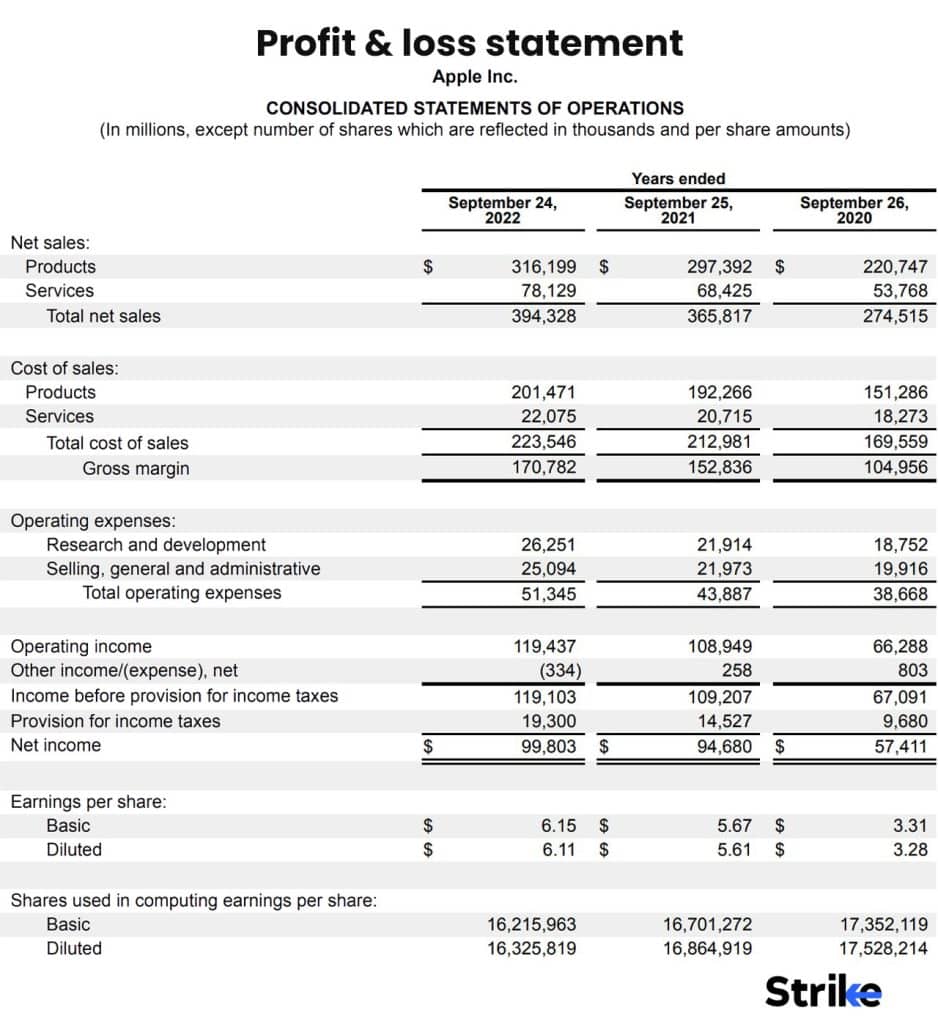
The profit and loss (P&L) statement summarizes a company’s revenues, costs, and expenses over a period of time to arrive at net profit or loss. Similar to an income statement, the P&L captures top-line revenues, operating costs like cost of goods sold, operating expenses, interest, taxes, and other costs. The key difference is that P&L has a narrower focus on profitability, while an income statement incorporates non-operating income and other comprehensive income. A P&L statement helps analysts evaluate the profit drivers and factors impacting bottom-line earnings or losses for the reporting period. It is a crucial tool for determining the company’s operating profitability.
5. Annual report
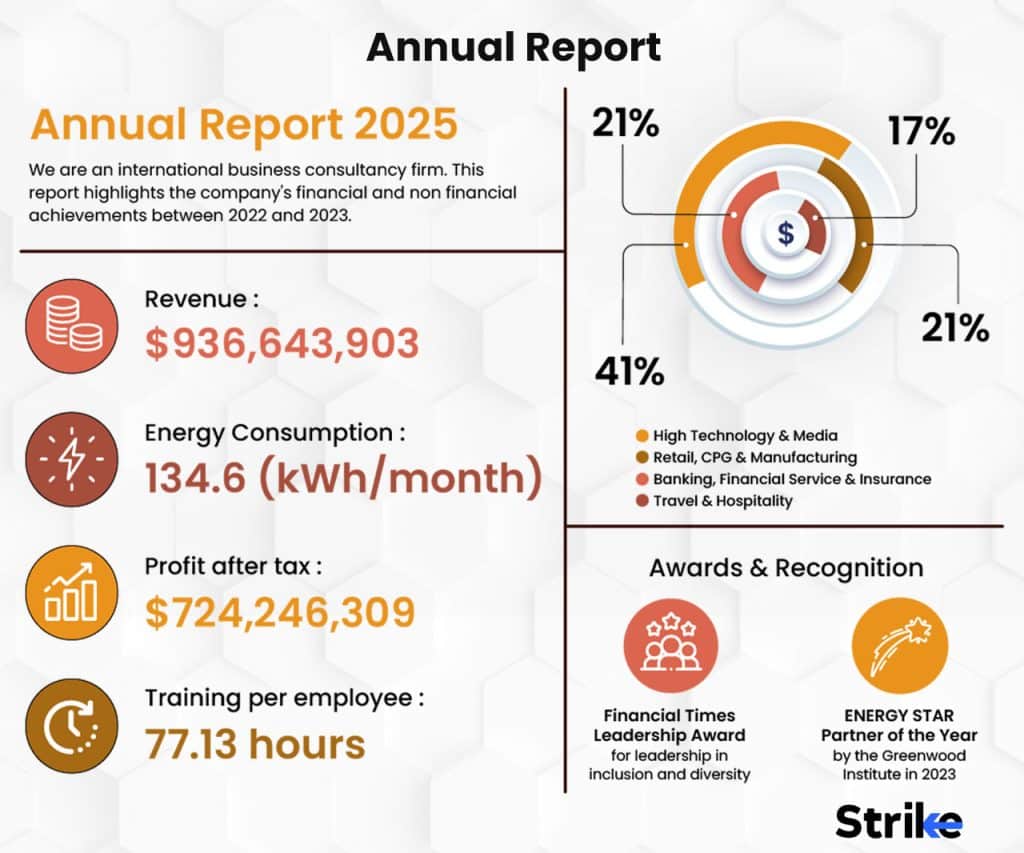
The annual report is a comprehensive corporate financial report issued annually. It includes the full annual financial statements along with the auditor’s report and management discussion and analysis. These sections offer context around the company’s financial results and position. The annual report also contains discussions of strategy, risks, corporate governance, and other details. Annual reports help investors fully assess a company’s performance and prospects.
6. Equity Statement
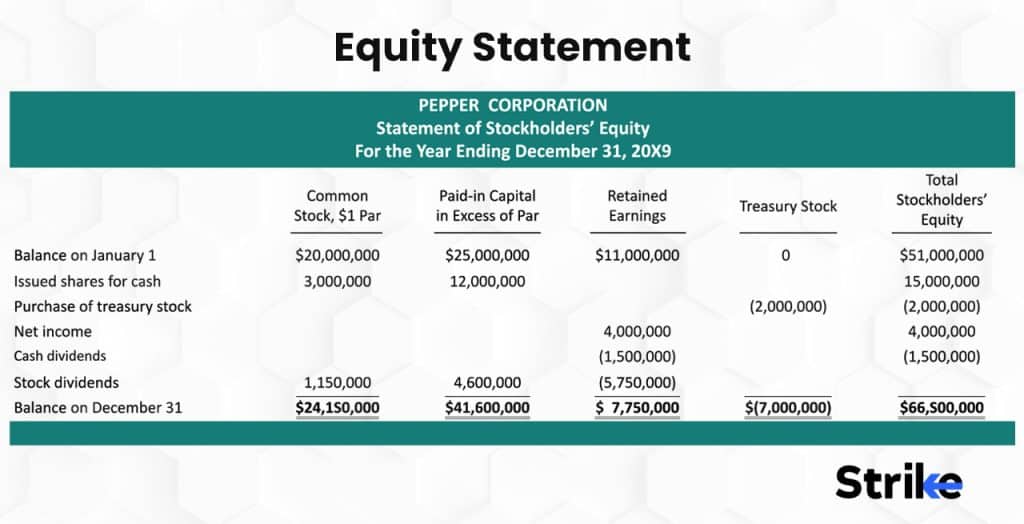
The statement of shareholders’ equity summarizes changes in equity accounts like common stock, paid-in capital, and retained earnings. It reconciles the beginning and ending shareholders’ equity balances by presenting transactions impacting each account, such as stock issuances, buybacks, and dividends. The statement highlights sources of increases and decreases in the equity the company has accumulated over time.
7. Retained Earnings statements
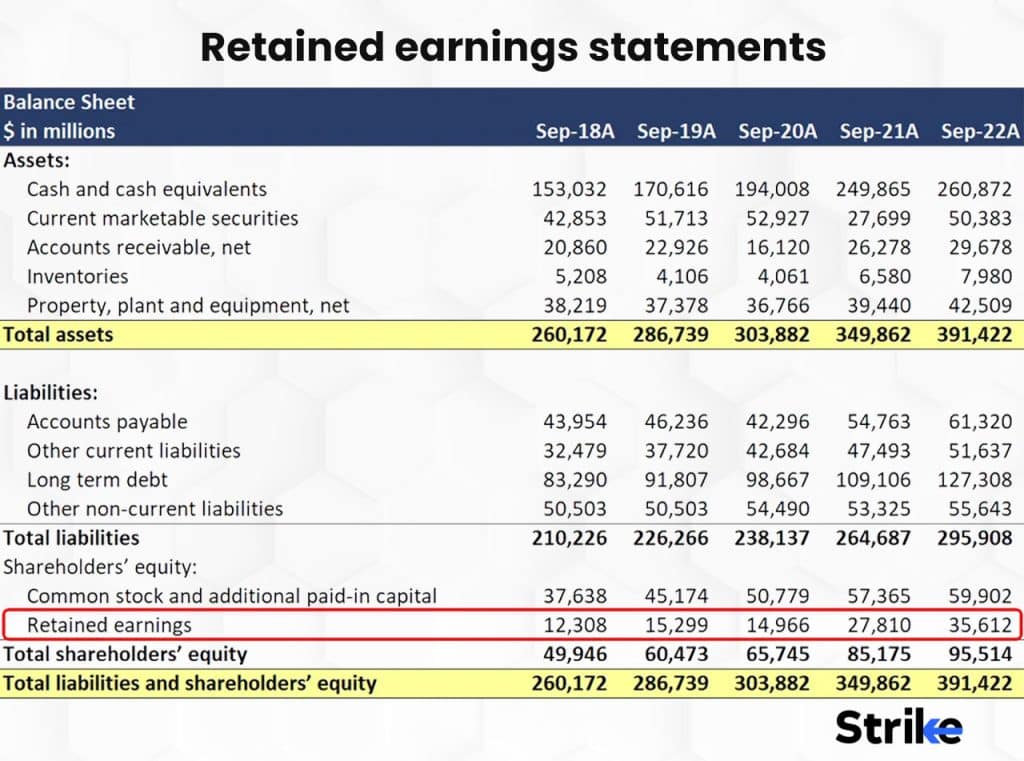
The statement of retained earnings summarizes changes in retained earnings for a reporting period. It shows the beginning and ending retained earnings balances and details additions or subtractions impacting the account. Additions include net income earned for the period. Subtractions include dividend payouts to shareholders. The statement reconciles the change in retained earnings with comprehensive income for the period. Retained earnings represent cumulative net income retained and reinvested by the company over its lifetime.
8. Comparative statements
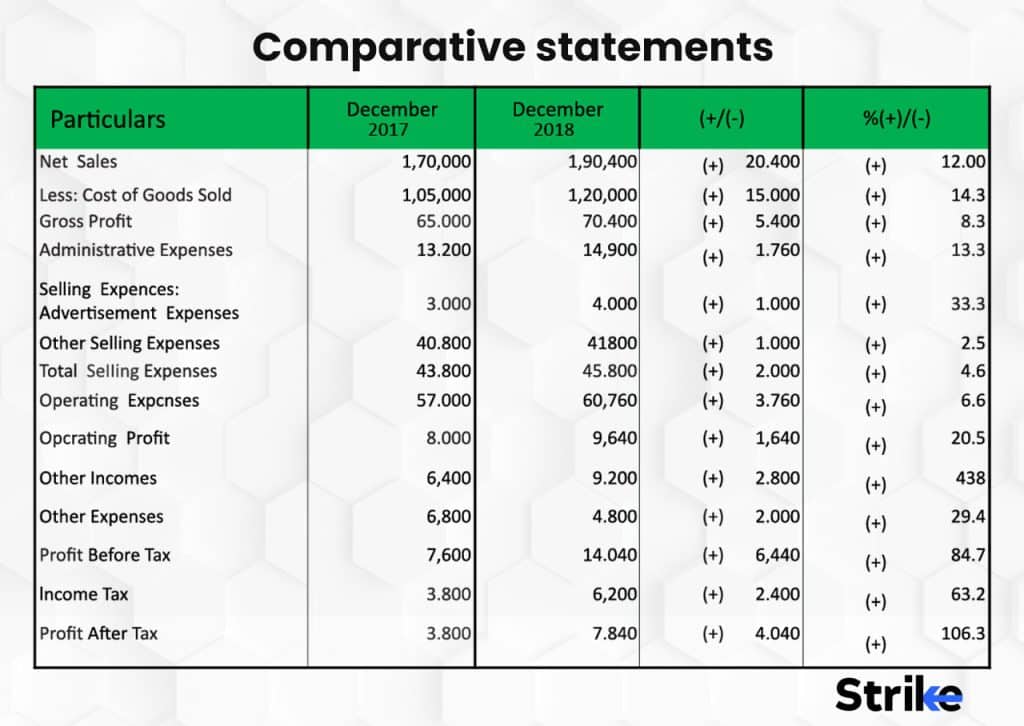
Comparative financial statements present financial data from the current period alongside data from prior periods for comparison. For example, comparative income statements or balance sheets contain account balances for the current fiscal quarter next to data from the same quarter last year. Comparing current performance to historical benchmarks highlights positive or negative trends in revenues, expenses, assets, liabilities, and other accounts. Analysts use comparative statements to identify variances and growth rates as well as assess progress toward objectives. Comparative statements make trends and unusual fluctuations easily visible. Common timeframes for comparison are quarter-over-quarter, year-over-year, or annual comparisons across a multi-year timeline.
9. Common size statements
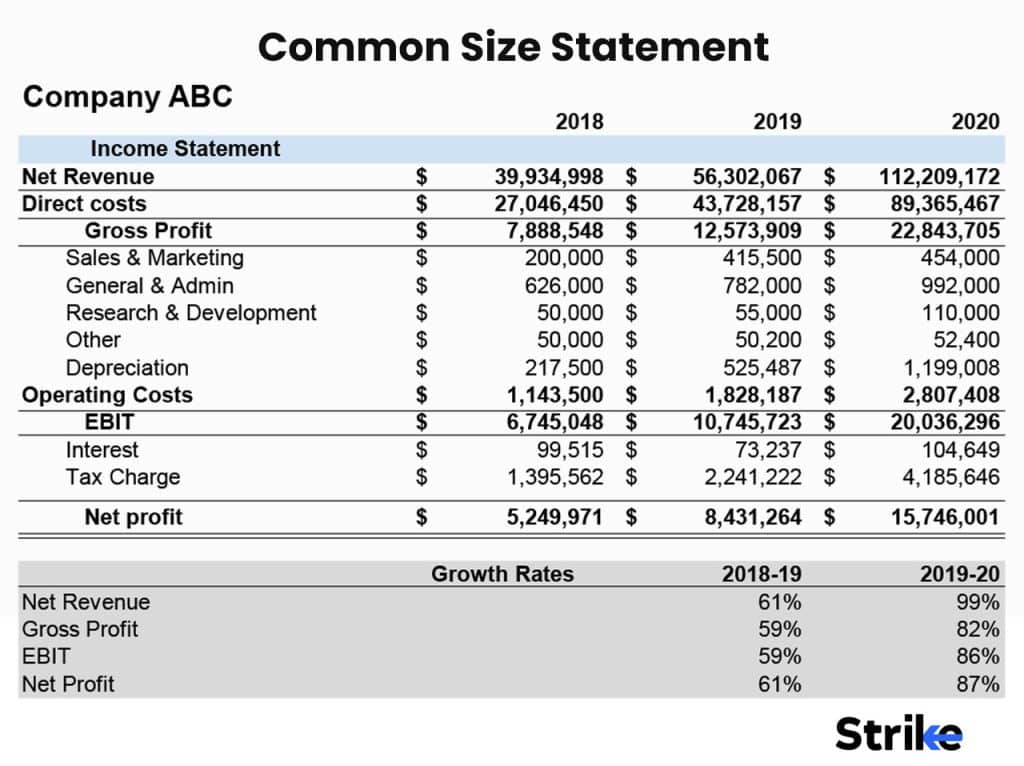
Common-size financial statements convert each line item to a percentage of a key total figure, such as total assets, total liabilities, or total revenues. On a common-size balance sheet, each asset and liability is shown as a percent of total assets. On a common-size income statement, each revenue and expense item is shown as a percent of total revenues. Common size statements allow for “apples to apples” comparison of figures across companies of different sizes. By converting to percentages, common size statements nullify the impacts of scale and highlight changes in key relationships in a standardized format. Companies are benchmarked against industry averages using common size analysis. Trends become evident even without nominal dollar changes. Common size statements make financial analysis and modeling easier.
10. Notes to financial statement
The notes or footnotes to the financial statements provide important disclosures, details, and explanations related to the financial statements. The notes offer context around accounting policies, estimates, and judgments used. They also describe the impacts of major corporate events, transactions, and adjustments. Notes provide breakdowns of expenses, assets, liabilities, and other accounts. They help readers interpret the financial statements appropriately.
While each statement has a distinct purpose, collectively, it offers a robust picture of the organization’s financial activities and health. Analyzing relationships and trends across financial statements allows stakeholders to make informed judgments regarding the business.
What is the source of financial statements?
The major source is the company websites themselves. As per listing guidelines, all NSE and BSE-listed companies have to upload their annual reports containing audited financials on their websites. Investors can check individual company websites to access the latest annual reports. One can also check business dailies for published financial data.
Leading financial newspapers like Business Standard, Economic Times, and Mint carry financial highlights of large listed companies after the announcement of annual results.Brokerage houses and rating agencies also provide financial statement datasets of companies under their coverage. Websites of CRISIL, CARE, ICRA, Motilal Oswal, and HDFC Securities allow searching company financials.
How do you analyze financial statements?
The first step in analyzing a company’s financials is gathering the latest financial statements, including the balance sheet, income statement, cash flow statement, and accompanying notes. Accessing the investor relations section of the company’s website is another way to obtain the latest financial reports. Focus on consolidated financial statements, which reflect total company results, rather than individual segment results. Also, gather financial statements from prior fiscal years for comparison.
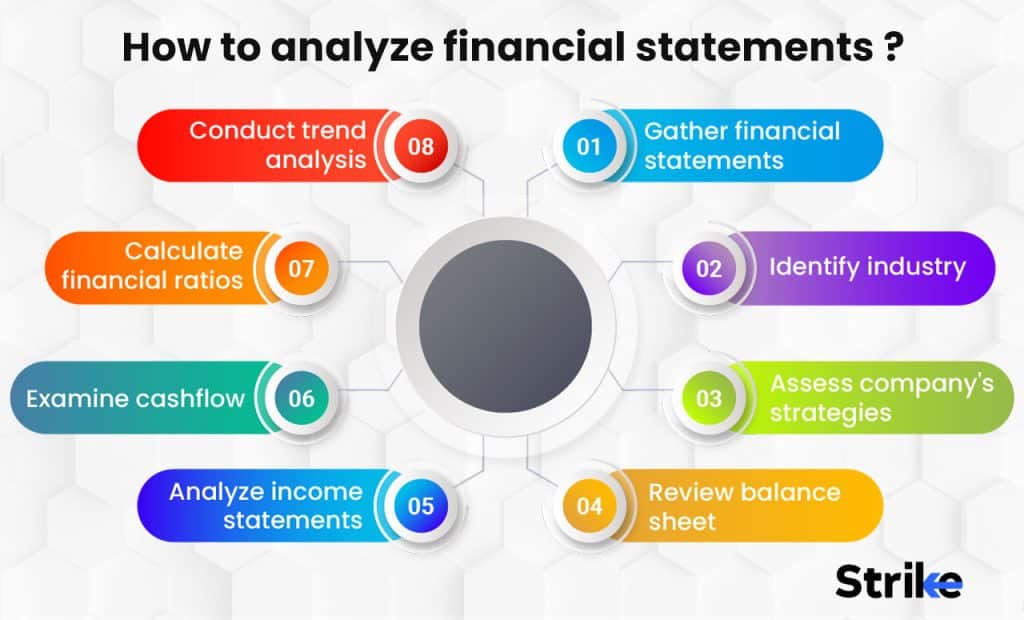
Once you have gathered the financial statements, identify key characteristics of the company’s industry, as industry trends directly impact financial results. Examine factors like growth rates, competition levels, operational efficiency, technology disruption, regulation, and macroeconomic conditions affecting the industry. Understanding the dynamics and benchmarks of the industry provides context for assessing the company’s performance and strategies.
Review management’s discussion of business strategies in their filings. This will provide insights into how the company intends to compete and position itself financially. For example, is the strategy to pursue aggressive growth or operate conservatively? Does the company emphasize cutting costs or making investments? Analyze how business risks, opportunities, and strategies relate back to the financial statements. This establishes the linkage between management intentions and actual financial outcomes.
Carefully study the assets, liabilities, and shareholders’ equity accounts on the balance sheet. Scrutinize accounts such as cash, inventories, goodwill, debt obligations, and reserves. Identify changes between periods and trends over the last several years. The balance sheet communicates the company’s liquidity, solvency, efficiency, and financial flexibility. Analyze these dynamics by calculating and interpreting liquidity, leverage, asset management, and debt ratios. Compare ratio results to industry benchmarks.
Thoroughly review the income statement, with a focus on revenues, expenses, operating income, one-time items, and bottom-line net income. Calculate profitability ratios like gross margin, operating margin, ROA, and ROE. Compare results historically for the company and relative to competitors. Determine if revenues or costs are growing/declining at disproportionate rates. Identify positive or negative trends impacting profit drivers. Assess how inflation, pricing power, and productivity initiatives have impacted financial performance.
Closely analyze cash flow from operations, investing, and financing activities. Cash flow represents real cash generated and used by the company. Examine the statement of cash flows along with balance sheet changes to understand the company’s liquidity and solvency. Analyze working capital trends and cash conversion cycles. Identify sources and uses of cash to determine how well the company manages capital. Compare capital expenditures to depreciation expenses for insight into asset renewal.
Financial ratios quantify and compare relationships between different financial statement accounts. Key ratios include liquidity, asset management, debt, profitability, and market value ratios. Calculate historical ratios for the company and compare them to industry benchmarks to gauge financial strength and operating results. Analyze how ratios relate to business strategies and economic conditions. Project future ratios based on business outlooks and management guidance.
Reviewing financial statement accounts over a multi-year period reveals business trends. Analyze 3-5 years of history and identify positive or negative trajectories. Growing accounts indicate strengths, while declining accounts signal weaknesses or risks. Compare revenue trends by business segment. Review growth in operating costs. Analyze trends in profit margins, liquidity, working capital, and cash flow. Operating trends directly impact financial results, so understanding the trends provides critical insights. Integrate findings from ratio analysis to identify financial milestones and turning points.
What is an example of financial statement analysis?
Reliance Industries Limited (RIL) is an Indian conglomerate holding company headquartered in Mumbai, Maharashtra, India. It is one of the largest companies in India by revenue and one of the largest publicly traded companies in the world. As a financial analyst, it is important to analyze RIL’s financial statements to evaluate its financial performance and position. Some key aspects of financial statement analysis that can be done for RIL include analyzing its income statement, balance sheet, and cash flow statement.
From the income statement, we can analyze RIL’s revenue, costs, expenses, and net profits over several years to understand the profitability trends. We can see if revenue and profits are increasing or decreasing. The income statement also provides important metrics like gross profit margins, operating profit margins, and net profit margins, which indicate the profit-generating ability of the company.
The balance sheet provides insights into RIL’s assets, liabilities, and shareholder’s equity. By comparing figures over multiple years, we can analyze changes in assets like cash, inventory, property, etc., and liabilities like debt levels. Key ratios like debt to equity, current ratio, and net debt to EBITDA can be calculated to assess the financial stability and leverage position of the company. The cash flow statement indicates the inflows and outflows of cash. By analyzing operating, investing, and financing cash flows, we can understand where the company’s cash is coming from and how it is being utilized.
Any discrepancy between profits and cash generation can also be identified. Through a comprehensive analysis of RIL’s financial statements over time, an analyst can evaluate the company’s operational and financial performance, its financial position and stability, and identify trends to make an informed investment decision about the company. It also helps in benchmarking the company’s performance against its competitors.
What are the benefits of financial statement analysis?
Financial statement analysis allows investors, creditors, and management to evaluate past performance and current position. Trend analysis provides perspective on historical trajectories, while ratio analysis quantifies metrics like profitability, efficiency, and leverage for comparison across companies and industries. Evaluating margins, liquidity, cash generation, and capital returns over time and versus competitors gauges operating success and financial strength. Performance evaluation via financial statement analysis promotes accountability and identifies areas for improvement.
By distilling financial data and disclosures into key metrics and insights, financial statement analysis informs decisions around valuation, lending, forecasting, and strategic planning. Investors determine valuation multiples and targets based on profitability and growth. Creditors assess creditworthiness and appropriate debt levels through solvency and leverage ratios. Management sets performance goals, capital allocation priorities, and growth initiatives based on financial position and trends. Financial advisors provide recommendations tailored to client risk profiles and objectives. Informed decisions require insights from diligent financial statement analysis.
Careful study of the balance sheet, income statement, and cash flow statement provides critical insights into a company’s financial health. Liquidity ratios assess short-term financial flexibility, while solvency ratios examine the ability to meet long-term obligations. Profitability and efficiency metrics quantify the company’s ability to generate returns on investments. Strong financial health is characterized by liquidity to cover obligations, manageable leverage, consistent profitability, efficient asset utilization, and disciplined capital allocation. Identifying strengths and weaknesses allows stakeholders to evaluate financial stability and growth capacity over time.
Analyzing financial statements helps identify potential risks such as excessive leverage, thin margins, cash flow shortfalls, or earnings volatility that could jeopardize financial stability. Declining metrics over time also signal risks related to industry dynamics, macroeconomic conditions, or company-specific challenges. Conversely, improving trajectories, surging demand, or tapping new markets offer potential opportunities for growth. Assessing working capital, inventory, and supply chain metrics identifies operational risks. Comparing company performance versus competitors highlights strategic advantages and threats. Financial analysis provides critical risk insights while revealing potential opportunities that warrant increased investment.
Financial statement analysis is a core discipline of finance and provides immense value to companies and stakeholders. Diligently studying the quantitative metrics and qualitative disclosures in financial statements facilitates insightful performance evaluation. It enables informed decision-making based on an enterprise’s economics. Careful analysis assesses financial health, including strengths, weaknesses, and risks. Opportunities are also revealed through financial trends and conditions. Ultimately, knowledgeable interpretation of financial statements allows investors, creditors, analysts, and management to thoroughly understand a company’s financial operations. Sound financial analysis provides the foundation for prudent valuation, lending, forecasting, investment, and strategic decisions. Undertaking thoughtful and rigorous review of financial statements is crucial for making astute choices that promote growth, stability, and success.
How can Strike help in analyzing financial ratios?
The Strike is a very powerful analytical tool for evaluating companies like Reliance Industries through financial ratios. It stores years of income statements, balance sheets, and cash flow statements of thousands of public firms. Not only this, but Strike automatically calculates key financial metrics such as profitability, leverage, liquidity, and valuation ratios from the financial data.
This saves huge time compared to manual computation. Analysts can effortlessly compare Reliance’s ratios with industry peers on the same platform. Trends over the years are visualized through easy-to-understand graphs. Custom ratios can also be created as per analytical needs. Shortlisting relevant ratios makes analysis focused. Alerts notify ratio breaches, aiding timely decision-making.
What is DuPont analysis?
DuPont analysis is a framework for evaluating a company’s return on equity (ROE) by decomposing it into three main components: profit margin, asset turnover, and financial leverage. The name comes from the DuPont Corporation, which began using this formula in the 1920s. DuPont analysis expands the net income to equity ratio to provide insights into the drivers of return on equity.
Specifically, it multiplies the net profit margin (net income/revenue) by the asset turnover ratio (revenue/assets) to determine a company’s return on assets (ROA). It then multiplies ROA by the equity multiplier (assets/equity) to calculate the return on equity. This approach allows analysts to identify the levers impacting ROE, such as profitability, operating efficiency, and financial leverage.
Companies use DuPont analysis to compare their drivers of ROE to competitors and identify strengths or areas for improvement. Investors utilize it to gain a deeper understanding of a company’s financial condition and operating trends over time. Overall, DuPont analysis decomposes return on equity into easily interpretable components for enhanced financial performance insights.









 Previous Article
Previous Article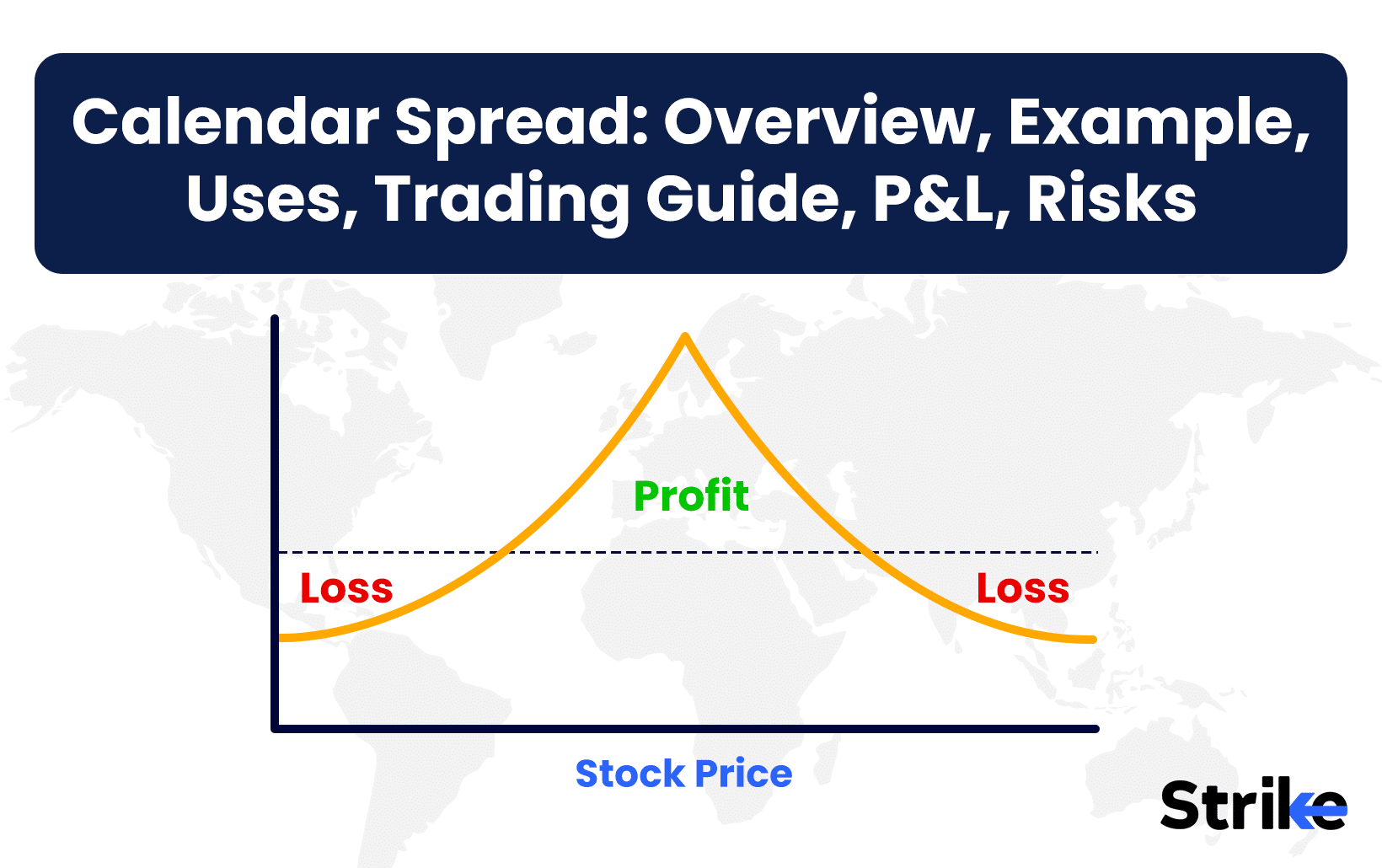
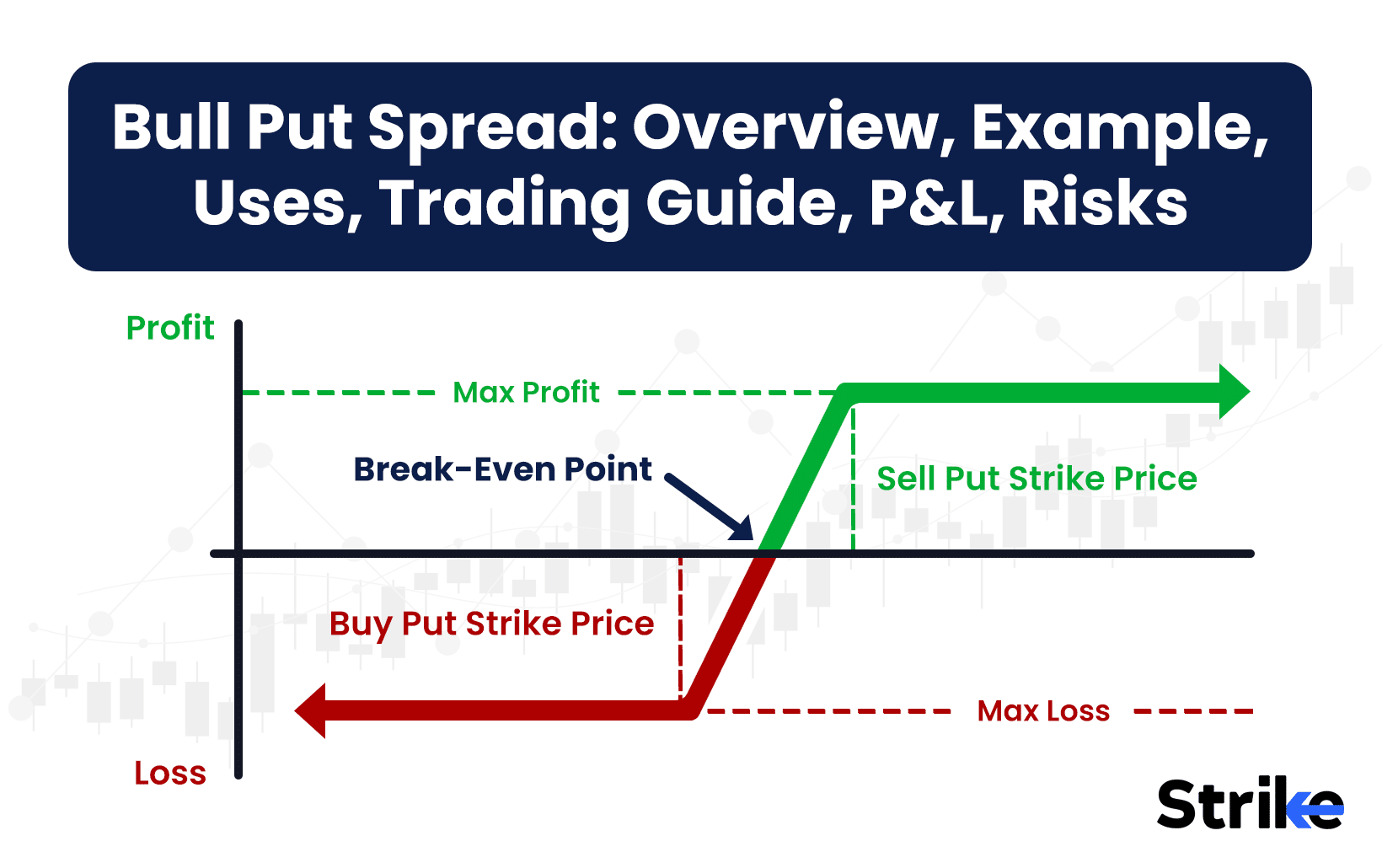





No Comments Yet